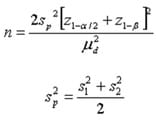A prospective study of outcome of resection anastomosis in elective GI surgeries.
Abhilash N.1*, Venugopal KJ.2, K Aithal S.3
DOI: https://doi.org/10.17511/ijoso.2021.i03.05
1* Abhilash N, Assistant professor, Department of General Surgery, BGS GIMS, Bengaluru, Karnataka, India.
2 Venugopal KJ, Assistant professor, Department of General Surgery, Adichunchungiri Institute of Medical Sciences, Mandya, Karnataka, India.
3 Srikanth K Aithal, Senior Consultant, Department of General Surgery, St Martha’s Hospital, Bengaluru, Karnataka, India.
Background: Bowel anastomosis is successful when there is accurate union with no tension. Previous literature has compared between hand suturing and stapling devices in retrospective and prospective designs with varying outcomes. In this study a comparison between hand suturing and surgical stapling in patients undergoing bowel surgery is done. Methods: A prospective study design over a period of 12 months was conducted in 40 patients undergoing elective resection and anastomosis. Different time parameters for anastomisis procedure, time taken for bowel sounds to return, resumption of oral feeds, postoperative hospital stay were collected. Follow up for 30 days post-operative was done. Results: In total forty patients were studied out of which twenty patients underwent hand sewn and twenty patients underwent stapler anastomosis. Main group analysis in mean time durations between hand sewn and stapler anastomosis were respectively; 35.25 minutes and 12 minutes for anastomosis, 3.4 days and 3.35 days for return of bowel sounds, 4.08 days and 4 days for resumotion of oral feeds, 9.35 days and 8.50 days for post-operative hospital stay. A sub-group analysis was also done.Conclusion: Stapler anastomosis had shorter anastomosis time and total duration of operation compared to hand sewn anastomosis. However no difference was seen in return of bowel activity, resumption of oral feeds and duration of hospital stay.
Keywords: Surgical anastomosis, Surgical staples, Operative time
| Corresponding Author | How to Cite this Article | To Browse |
|---|---|---|
| , Assistant professor, Department of General Surgery, BGS GIMS, Bengaluru, Karnataka, India. Email: |
Abhilash N, Venugopal KJ, Aithal SK. A prospective study of outcome of resection anastomosis in elective GI surgeries.. Surgical Rev Int J Surg Trauma Orthoped. 2021;7(3):67-72. Available From https://surgical.medresearch.in/index.php/ijoso/article/view/237 |


 ©
© 